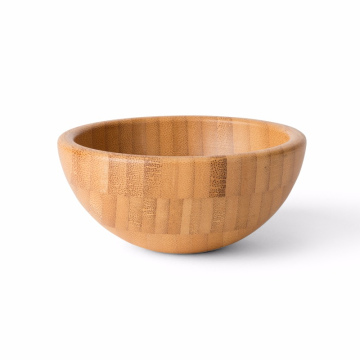Introduction to Donburi: The Comfort Food of Japan
Donburi, a quintessential dish in Japanese cuisine, offers a unique culinary experience that showcases the harmonious balance of rice and various toppings. At its core, donburi consists of a serving of steamed rice, which acts as a comforting base, often accompanied by a wide range of ingredients that can transform it into a hearty meal. The term "donburi" itself refers to both the dish and the bowl it is served in, indicating the close connection between the container and its contents.
The origins of donburi can be traced back to the Edo period in Japan when it emerged as a convenient meal for the working class. The development of this beloved rice bowl dish reflects the need for an easily consumable food that caters to busy lifestyles without compromising flavor or nutritional value. Today, donburi has evolved to encompass numerous styles and toppings, ranging from traditional ingredients like tempura, unagi (grilled eel), and gyudon (beef), to modern variations that incorporate seasonal vegetables and international flavors.
What truly sets donburi apart is its adaptability; the combination of rice and toppings allows for endless variations, making it a canvas for creativity. Not only does it satisfy hunger, but donburi also evokes a sense of nostalgia and comfort, heavily ingrained in Japanese culture. The communal aspect of sharing donburi dishes, whether at home or in restaurants, further solidifies its status as a staple in traditional and modern Japanese dining.
In exploring donburi, one delves into the heart of Japan’s culinary landscape, discovering how this simple yet profound dish continues to resonate with people of all ages, transcending mere sustenance to embody a rich tradition of flavor and comfort.
Rice, Toppings, and Tradition: A Donburi Food Trip in Japan
Discover the delightful world of Donburi, a beloved Japanese rice bowl dish that combines steamed rice with a variety of toppings. Originating from the Edo period, donburi reflects traditional and modern culinary practices across Japan. Explore regional specialties like Gyudon and Katsudon, learn about creative toppings and traditional preparation methods, and get tips for making donburi at home. This blog post celebrates the adaptability and comfort that donburi brings to diners of all ages, illustrating its importance in Japanese culture and cuisine.
Rice, Toppings, and Tradition: A Donburi Food Trip in Japan
Introduction to Donburi: Japan's Iconic Rice Bowl
Donburi, the quintessential Japanese rice bowl, is a culinary emblem that holds a cherished place in Japan's gastronomic landscape. This dish is characterized by a generous serving of steamed rice contained within a bowl, topped with an array of ingredients that can range from succulent meats to fresh vegetables and flavorful sauces. The simplicity of donburi belies its cultural richness, which is deeply interwoven with Japan's history and societal norms.
Historically, donburi originated during the Edo period (1603-1868) when it was common for workers, particularly in urban settings, to seek quick yet satisfying meals. This practicality contributed to the widespread popularity of donburi, as it allowed for a diverse range of toppings that could be prepared quickly, catering to the fast-paced lifestyle of city dwellers. Over time, donburi evolved into a beloved comfort food, serving not only as a meal but also as a representation of home-cooked warmth and tradition.
Beyond its historical roots, donburi embodies various regional interpretations, reflecting the local ingredients and culinary practices throughout Japan. From the seafood-rich katsudon in coastal regions to the chicken-centric oyakodon, each variation tells a story of local culture and flavors. The versatility of donburi also extends to its ability to accommodate seasonal ingredients, making it a year-round favorite in Japanese cuisine.
In essence, donburi is more than just a meal; it serves as a cultural artifact that encapsulates the Japanese ethos of simplicity, comfort, and community. Understanding donburi enhances one's appreciation of Japanese cuisine and underscores its enduring significance in both everyday diets and festive occasions. Whether enjoyed in a bustling restaurant or a cozy home kitchen, donburi remains a staple that unites the past with the present, illustrating the rich tapestry of flavors that define Japan's culinary identity.
Exploring the Different Types of Donburi
Donburi, a quintessential dish of Japanese cuisine, is a rice bowl topped with various ingredients, and it encompasses a diverse array of types that delight the culinary senses. Each variant of donburi is characterized by unique flavors and preparation methods, reflecting regional nuances and traditions. Among the most popular types is Gyudon, or beef donburi, which features thinly sliced beef simmered in a sweet and savory sauce made from soy sauce, mirin, and sugar. Typically garnished with onions and served over a steaming bowl of rice, Gyudon is not only comforting but also a staple in many Japanese households and restaurants.
Another beloved form of donburi is Oyakodon, which translates to "parent-and-child donburi" for its use of chicken and eggs. The chicken pieces are cooked together with onions in a dashi broth, followed by the gentle addition of beaten eggs, which are allowed to set softly over the rice. The dish represents harmony between the flavors of tender chicken and rich egg, earning its reputation as a popular comfort food among families. Its simplicity in preparation makes it a frequently chosen option for a quick yet satisfying meal.
Katsudon, or pork cutlet donburi, is also noteworthy. The dish combines crispy deep-fried pork cutlet served over rice, crowned with a rich sauce made from soy sauce and dashi, along with fluffy scrambled eggs. This hearty meal is often enjoyed by those seeking a fulfilling and indulgent experience. Additionally, regional specialties abound; for instance, Hokkaido is known for its seafood donburi, which features fresh raw fish or shellfish atop a bed of rice, reflecting the local bounty of the sea.
Throughout Japan, donburi showcases the country’s culinary diversity, allowing each region to present its own interpretation while paying homage to traditional flavors. As you explore these different types of donburi, you will discover a world steeped in history and culture, each bowl telling a unique gastronomic story.
Essential Toppings: From Traditional to Creative
Donburi, a popular Japanese rice bowl dish, serves as a versatile canvas for a variety of toppings, allowing individuals to personalize their meals while paying homage to traditional representations. Classic toppings such as pickled vegetables, known as “tsukemono,” and finely chopped scallions are staples in Japanese cuisine. These ingredients enhance the donburi not only through their flavors but also by adding a delightful crunch and vibrant visuals that appeal to the senses.
Alongside these traditional options, contemporary culinary creativity has ushered in a realm of innovative toppings. For instance, the incorporation of avocado, renowned for its creamy texture, offers a refreshing contrast to the more robust flavors of meats or fish commonly featured in donburi. Cheese, too, has made its way into this traditional dish, adding a rich, savory element that enriches the overall culinary experience. This blending of flavors allows for a unique fusion that caters to diverse taste preferences.
When selecting toppings for a donburi, it is essential to consider the balance of flavors and textures. A harmonious combination can be achieved by pairing umami-rich ingredients like soft boiled eggs or marinated meats with fresh, crisp vegetables. Seasonal ingredients also play a pivotal role; for example, springtime could inspire the addition of bamboo shoots or umeboshi (pickled plum) for a refreshing zing, while hearty toppings like sautéed mushrooms may be more suitable during the colder months.
Ultimately, the beauty of donburi lies in its customizable nature. Experimenting with toppings not only caters to individual preferences but also encourages creativity and exploration of flavors. By respecting traditional elements while also embracing modern twists, diners can create a truly personal and satisfying culinary experience, transforming each bowl into a unique expression of their taste and seasonal enjoyment.
Cultural Traditions and Dining Etiquette Surrounding Donburi
Donburi, a beloved staple in Japanese cuisine, is steeped in cultural traditions and practices that enhance the dining experience. This versatile dish, which consists of rice topped with various ingredients, is not only popular in homes but also frequently enjoyed in restaurants. The way donburi is served and consumed reflects deeper aspects of Japanese culture and dining etiquette.
At home, donburi is often prepared as a simple and nutritious meal, representing the essence of comfort food for many families. It is common for families to gather at the dining table, sharing dishes that allow for communal enjoyment. In such settings, diners may select from a variety of toppings, creating a personalized bowl that suits individual preferences. This practice not only promotes a sense of togetherness but also highlights the importance of family in Japanese life. Conversely, in restaurants, donburi is typically presented as a beautifully arranged dish, emphasizing aesthetics alongside flavor, which reflects the Japanese principle of "shun" – enjoying seasonal ingredients at their peak.
Dining etiquette when enjoying donburi is rooted in respect and gratitude. Before a meal, it is customary for diners to express appreciation by saying "itadakimasu," acknowledging the efforts taken to prepare the food. While eating, individuals should use chopsticks to savor the dish thoughtfully, avoiding slurping, which is generally frowned upon in formal settings. However, in casual dining, some may slurp as a form of appreciation for the meal.
Special occasions, such as seasonal festivals, often feature donburi, showcasing regional variations of the dish. These celebrations provide an opportunity to honor local traditions and enjoy the communal sharing of food. By partaking in these rituals, individuals not only enjoy a delicious meal but also connect with cultural heritage, reinforcing the significance of donburi beyond just sustenance. Overall, understanding the cultural customs and etiquette surrounding donburi allows for a richer appreciation of this cherished dish.




